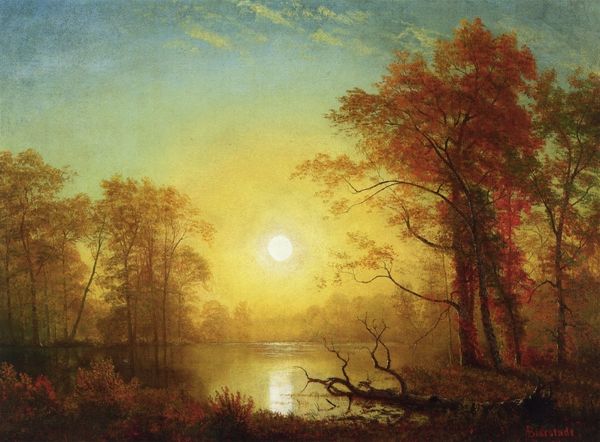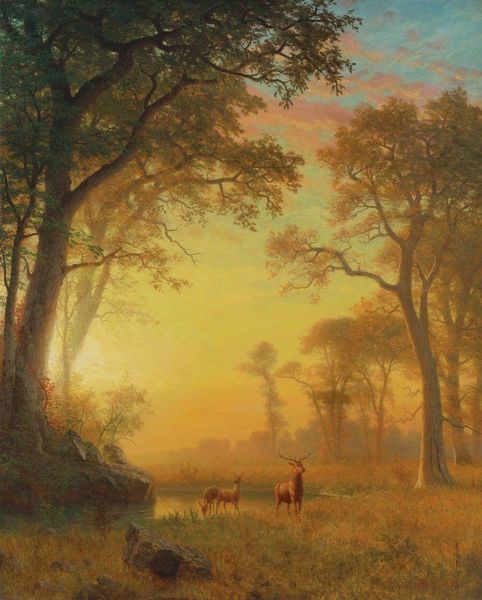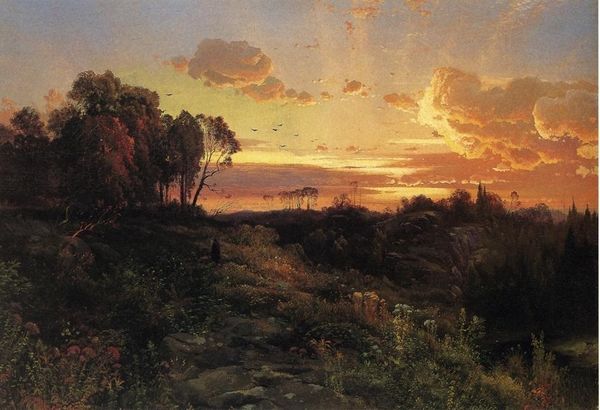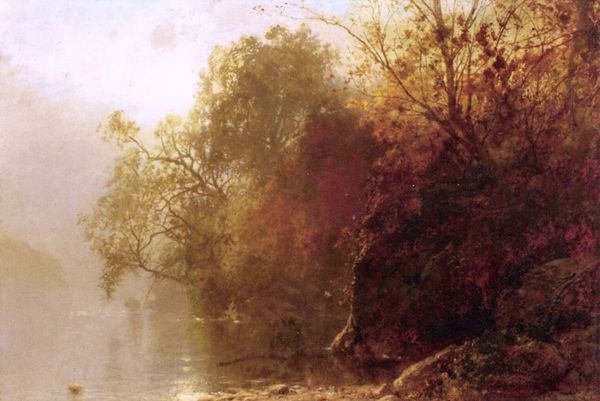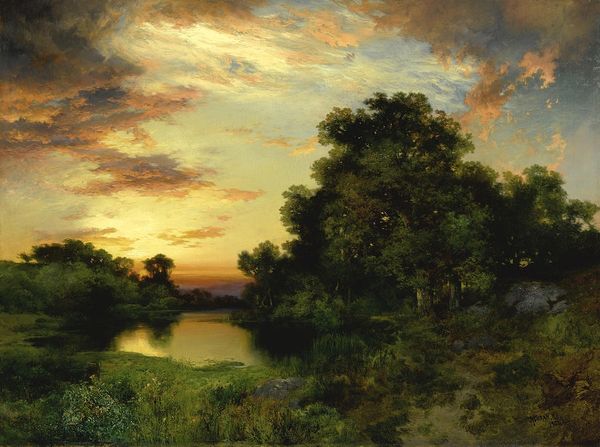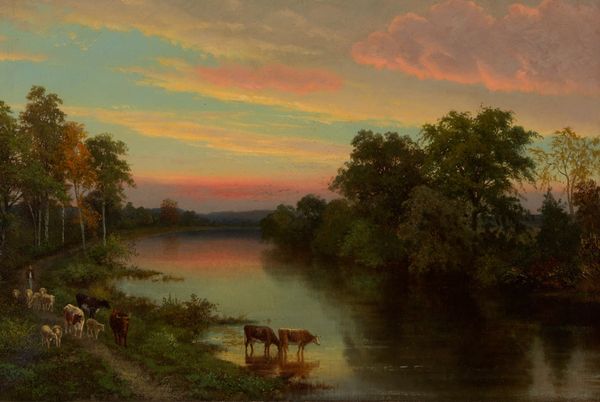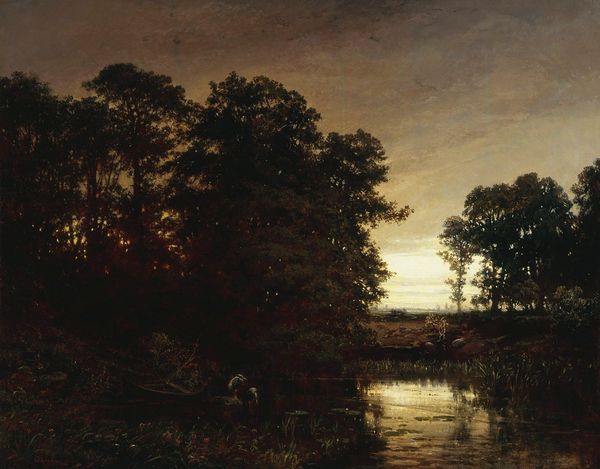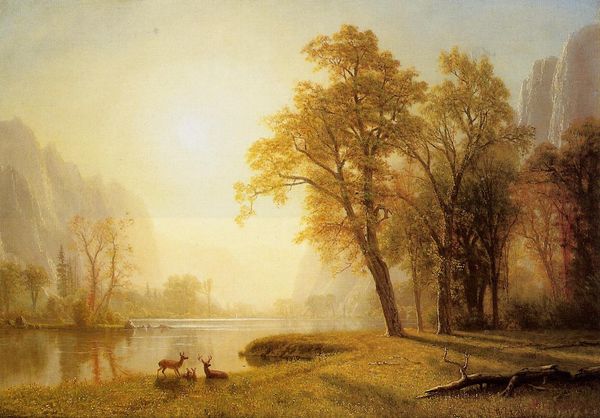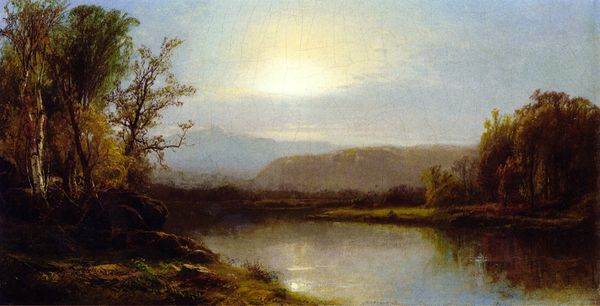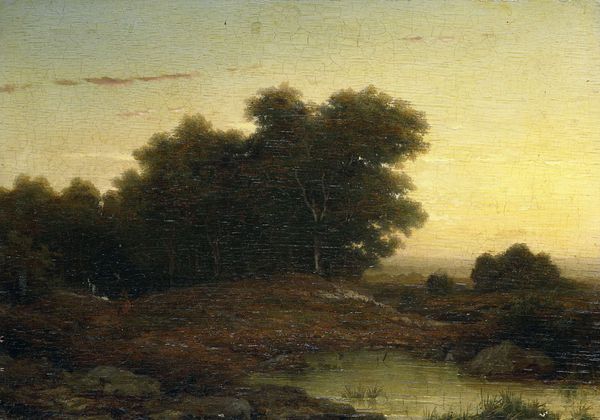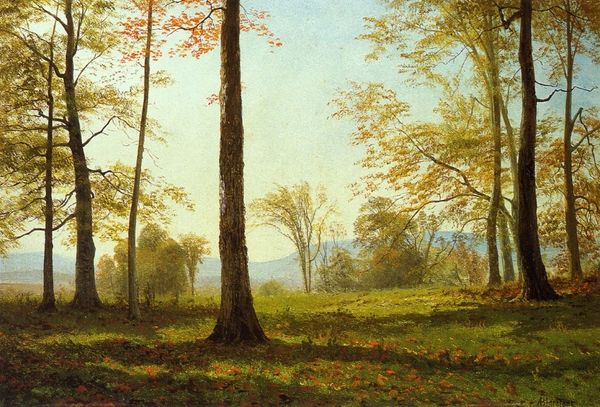
Dimensions: 13.34 x 21.59 cm
Copyright: Public domain
Curator: This is Albert Bierstadt's "Sunset, Deer, and River," painted in 1868. Notice the way he captures the luminosity. Editor: It’s undeniably beautiful, a perfect idealized sunset. Though, initially, it feels almost too picturesque. Curator: Bierstadt was part of the Hudson River School, which celebrated the American landscape. Observe how the formal arrangement creates a visual harmony, the play of light on water balanced by the massing of trees on either side. Semiotically, we could view it as nature representing divinity. Editor: And to think about the sheer labor—transporting canvases, mixing paints from raw materials in the field… Oil paint, of course, but what kind of weave did the canvas have? It suggests an interesting contrast, doesn't it? That Romantic ideal conveyed through arduous physical processes, like hauling materials and easels, making brushes? Curator: The romantic spirit is captured in the composition as well. Note the contrasting light and shadow used to build drama. How does the texture work as a formal structure? Editor: Quite cleverly. But the texture also tells the story of Bierstadt’s labor, right? Every brushstroke is a material trace. What’s fascinating is to imagine the cost involved: the price of pigment, canvas, brushes… Curator: Precisely! Now, to speak more directly about luminosity in this piece: Look how Bierstadt’s rendering suggests light is more than just an effect but rather an active element. How the river mirrors and diffuses light creates ethereal quality overall? Editor: It certainly has a draw. When you really consider what goes into achieving that, you start thinking about class. Who could afford the leisure, education, and supplies to make art like this? A question of social context and class, of course, inseparable from material production and even from this painting’s eventual place in the market, in collections, on display. Curator: These perspectives combined allow a deeper view into Bierstadt’s work. The piece is not simply representational; its success relies upon these material-based details. Editor: True. We move beyond just looking "at" it to considering how it comes into being, its embedded meaning regarding both subject and object.
Comments
No comments
Be the first to comment and join the conversation on the ultimate creative platform.


